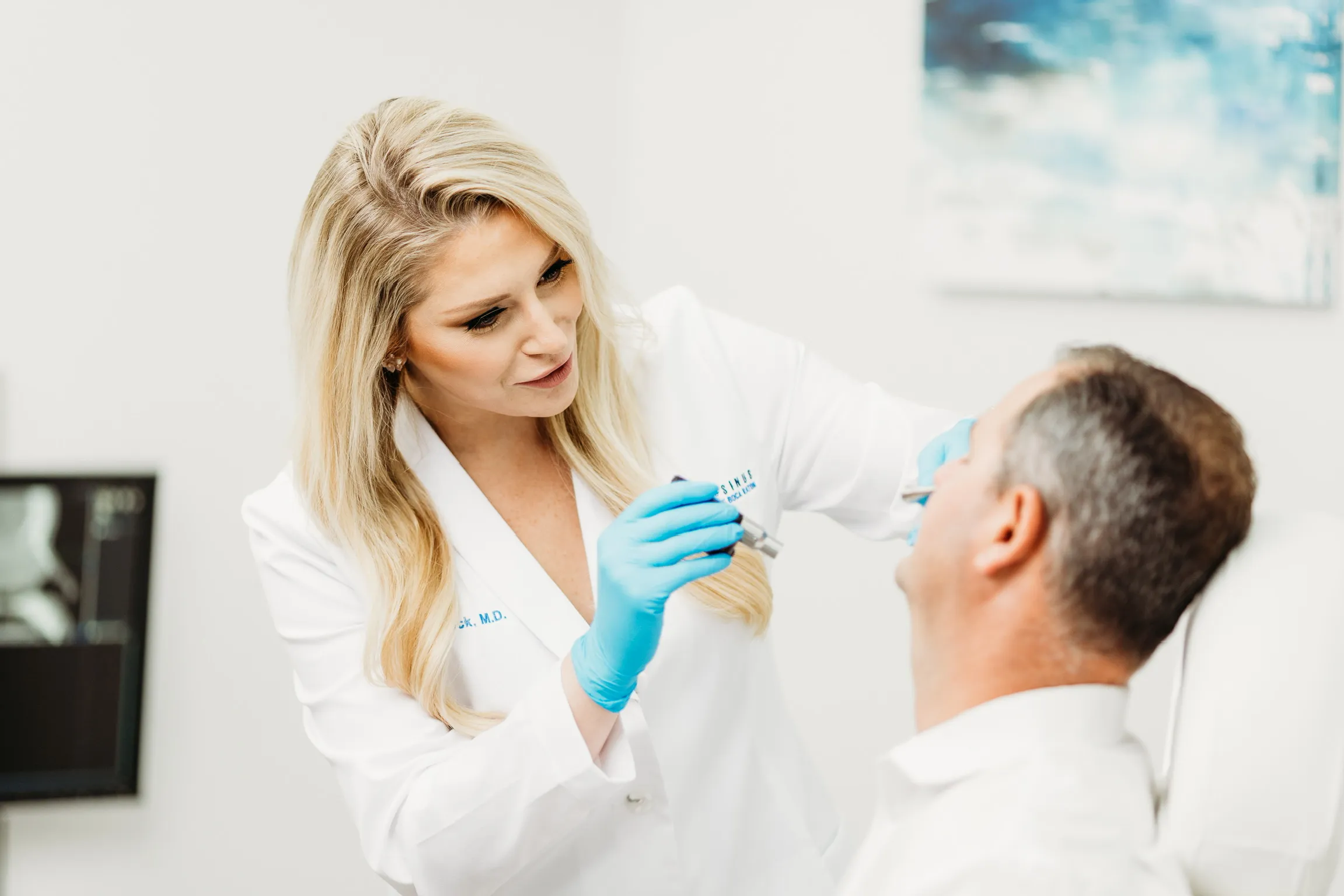Chronic sinusitis can disrupt daily life with ongoing congestion, facial pain, and pressure. For patients who do not find relief through medication alone, balloon sinuplasty offers a minimally invasive solution. This procedure gently opens blocked sinus passages using a small balloon catheter, improving airflow and drainage. Over time, patients often experience sustained symptom relief and a better quality of life.
How Does Balloon Sinuplasty Work?
Balloon sinuplasty reshapes the sinus pathways without removing bone or tissue. During the procedure, an ENT specialist guides a small, flexible balloon catheter into the affected sinus. Once in place, the balloon is slowly inflated to widen the sinus opening. After the passage is expanded, the balloon is deflated and removed, leaving the sinus open for improved drainage. Because there’s no cutting involved, this technique reduces recovery time and minimizes discomfort. Most patients return to normal activities within a day or two after the procedure, making it an appealing option for those with busy schedules.
What is the Initial Relief and Long-Term Recovery?
Many patients notice a significant improvement in symptoms shortly after balloon sinuplasty. Nasal congestion, facial pressure, and sinus headaches typically decrease within the first week. Since the procedure doesn’t involve surgical incisions, there is minimal swelling or bruising. Patients also tend to need fewer pain medications and experience fewer side effects compared to traditional sinus surgery. In the first few months post-procedure, the body continues to heal and adjust to the newly opened sinus pathways. Proper follow-up care, such as nasal irrigation and check-ins with an ENT, supports continued recovery and prevents complications.
Studies show that balloon sinuplasty delivers long-lasting results for many patients. Improvements in sinus symptoms often continue for a year or more following the procedure. Some patients report sustained relief even five years later, particularly when balloon sinuplasty is part of a comprehensive treatment plan that includes allergy management or other medical therapies. The long-term success of the procedure depends on individual factors such as the severity of sinus disease, presence of nasal polyps, and overall sinus anatomy. For those with chronic inflammation but without complex structural issues, sinuplasty often provides reliable, ongoing symptom control.
Will There be Reduced Need for Additional Treatments?
One major benefit of balloon sinuplasty is its ability to reduce the need for repeat interventions. Many patients find they rely less on daily decongestants, nasal sprays, or antibiotics after the procedure. Fewer sinus infections and less dependence on medication contribute to a healthier, more manageable lifestyle. Though some individuals may require additional procedures over time, especially if other nasal issues develop, the majority experience long-term improvements with minimal follow-up interventions. Keeping inflammation in check and avoiding environmental triggers can also help maintain results.
Sinuplasty is best suited for patients with chronic or recurrent sinusitis who have not found lasting relief through medical treatments. It works especially well for those whose sinus blockages are due to inflammation rather than structural abnormalities. Because the procedure preserves normal anatomy, it is often recommended for people looking for a gentler, tissue-sparing option. Patients with complex sinus disease, nasal tumors, or extensive polyps may need more invasive surgery. An ENT specialist can evaluate each case to determine if balloon sinuplasty is appropriate or if other procedures will be more effective.
Schedule a Balloon Sinuplasty Consultation
Sinuplasty continues to gain recognition as a long-term solution for chronic sinus issues. By offering symptom relief with minimal downtime, the procedure supports both immediate comfort and lasting wellness. For many patients, this minimally invasive option leads to fewer infections, reduced medication use, and a renewed ability to breathe easily—year after year.
- Choosing the Right Plastic Surgeon for Your Cosmetic Procedure
- Understanding Different Types of Laser Treatments for Skin Rejuvenation
- Why a Family Dentist is Key for Maintaining Oral Health
- The Benefits of Regular Visits to a Wellness Spa
- Exploring the Emotional and Psychological Triggers of Eating Disorders


Leave a Reply